Earlier this year, HGN were very fortunate to work alongside several other partners, including historian Dr Chris Kempshall, the University of Glasgow Games and Gaming Lab, and sponsored by World of Tanks to co-host the Imperial War Museum’s War Games Jam.
The War Games Jam asked participating teams to create an innovative war video game inspired by IWM’s collections and stories of conflict from 1914 to the present. We hoped that participants would create games or gaming concepts which featured unexpected and under-explored stories of conflict, embracing creativity, empathy and diversity in their design and challenging expectations of what video games based around war and conflict can be (and all the teams certainly delivered this!). Each video game was inspired by one of several specially-selected IWM collection items from the First World War onwards. The War Games Jam formed part of IWM’s War Games season and all the submissions are available to play here.
The IWM team were fantastic and encouraged two types of competition entry. One for Best Playable Game and the other for Best Game Concept. In each category the competition was incredibly close – the judges scores attest to the closest of contests but just emerging ahead of the others were a team from Edinburgh Napier University.
The team “Napier Game Devs” submission is entitled “Aging like Buildings” and the Developers Jacopo Santarossa, Jakub Mazurek, Keir Bailey, Mitchell MacPherson and Ellie Black chose their concept as a way of demonstrating the duplicity, complexity and horror of the Second World War in Italy. The following post is the team explaining, in their own words, more about their idea and the design process.
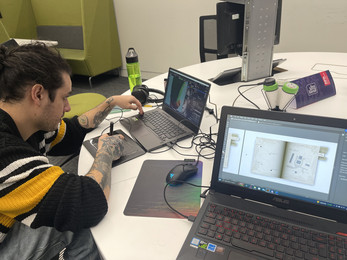
As a team, the first rule of order was to create a mission statement for the concept: “Build a teaching, learning and communicative experience that would use game elements with story, to convey the devastation of World War 2.”
The Imperial War Museum had kindly offered all teams a selection of objects from the exhibition, which would help to creatively inspire stories and potential game concepts. The history of the “Western Front Violin” intrigued our team, in particular, how it was made from trees that grew on First World War battlefields and endured the destruction of the war.
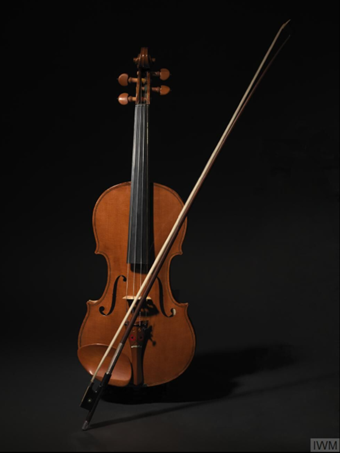
In our story, the old man telling the tale has endured the horrors of war and as a result has obscured what he believes to be morally right. This is demonstrated in the stories being told to the grandchild and how the twist at the end of our story came to be. This image of “getting old” after such destruction was inspired by the violin and the trees.
Our team was intrigued by the under-explored topic of Italian Partisans known as “Partigiani”. In order to oppose the fascist state, common people formed the illegal military force known as the partisans. During radio conversations, they frequently used nicknames to avoid being recognised in case the fascists were listening.
A difficulty with the project had come with the style and presentation of the game, as a team we had felt that a style similar to Valiant Hearts: The Great War (2014) would help to make the project more friendly to people of all ages, whilst still showing the reality of brutality caused during a war.
To follow appropriate representation, much research was done into clothing that was worn by the Partisans. From research, it was found that there was a mix of clothing used, from everyday clothes worn by some, to Italian army uniforms worn by former soldiers who decided not to join the Fascist army. There was a mix of all clothing due to the mix of Partisans; from peasants, students, workers who joined up the Partisan units. Additionally, to identify themselves, units wore simple patches or vibrant cherkieves around their necks in the colours red, green, or blue, depending on the brigade to which they belonged.

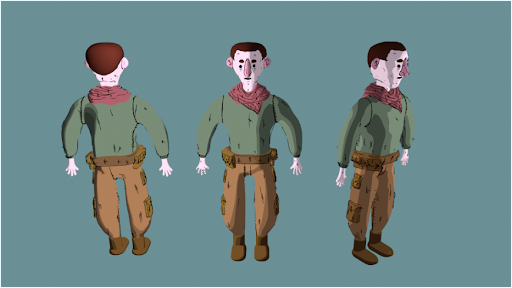
The designed characters had been largely influenced by the uniforms worn by real Partisan soldiers, giving a mix of “normal” clothing with some army pieces such as the cargo trousers and boots. The handkerchief scarf was also added to identify the character as part of a specific unit.
Rural villages that had survived the War were heavily referenced in the game’s environments. The majority of the buildings were in ruins and disrepair, and the neighbourhood appeared to be completely lifeless. Many buildings had been used as models for other structures, and images of soldiers on the demolished road to Rome as well as references to towns like Argenta and Asiago served as major sources of inspiration. While a precise recreation of a town would have been ideal, the limited amount of time precluded it.
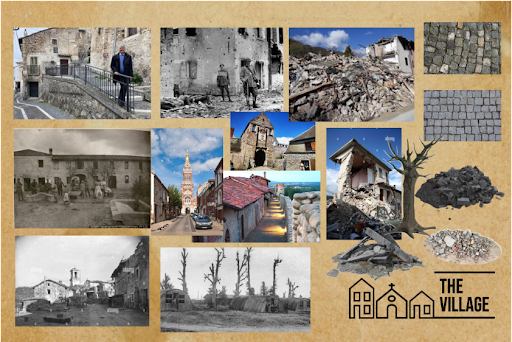
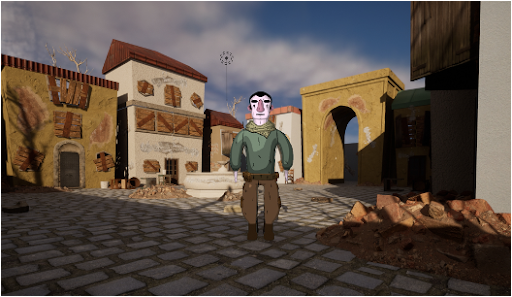
Weapons that would be used by the player, also had to be time period specific, and so It was crucial for the plot to depict the armaments employed in Italy at this point in the conflict.
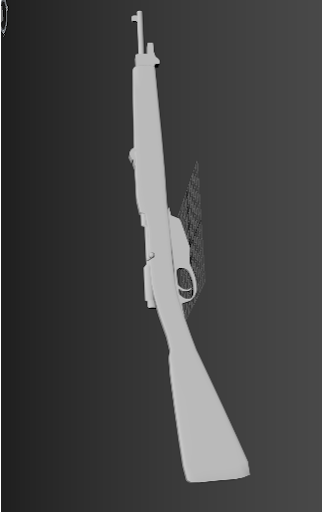
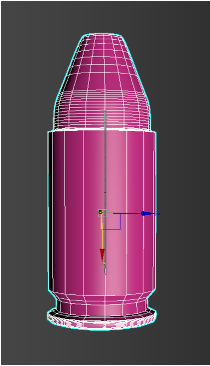
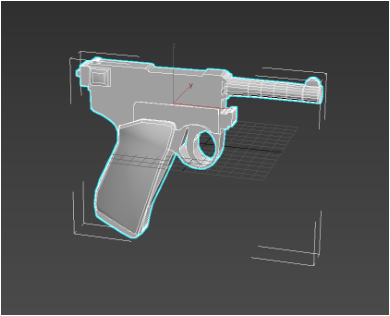
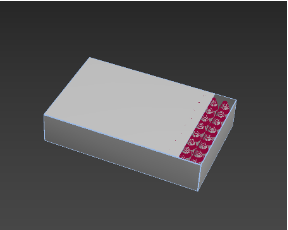
Due to this, the Glisenti Model 1910 handgun and Mauser Model 1893 rifle were chosen. Both of the firearms were widely utilised throughout the Spanish regions. The Mauser Model 1893 rifle, was a rifle mostly used by the Spanish Army however, it was a common find and this model was adopted by other countries in other calibres, therefore it was felt this would make sense as a primary weapon for the player. It was researched that the Glisenti Model 1910 handgun saw extensive service in World War I and World War II with the Royal Italian Army, and so it was decided that this would be a good secondary weapon for the player. Both of the guns had been modelled for the game, unfortunately, there was not enough time for texturing. Moreover, a 9mm Glisenti bullet was modelled for a few of the scenarios, alongside an ammo box.
Many lost notebooks that were misplaced by soldiers on the battlefield had an impact on the game’s user interface. Since many soldiers’ notebooks would contain vital information like their name, rank, unit, and date of mobilisation, it was thought that this would be appropriate. The idea of a soldier’s book containing health, equipment, and other information about the mission had connected well and created a unique UI. In a more conventional sense of game design, this type of information would be presented through a menu.
The project’s sound design was also crucial, and it was thoughtfully developed and influenced by the reality of war. It was thought that the audio could fit the narrative since as the kid gets older, the gameplay itself gets more realistic since the story is supposed to be about a grandfather telling his grandchildren stories as they grow older.
Napier Game Devs Concept submission to the IWM War Game Jam 2023 is available here. The team comprised of Jacopo Santarossa – 3D Modelling/Character Artist/Rigger/Animatorworks, Jakub Mazurek – 3D Modelling/Environment Artist, Keir Bailey – UI/UX Designer, Mitchell MacPherson – Sound Designer and Ellie Black – 3D Modelling.
